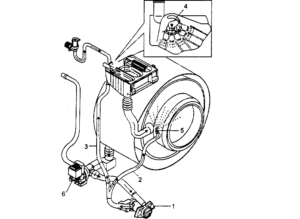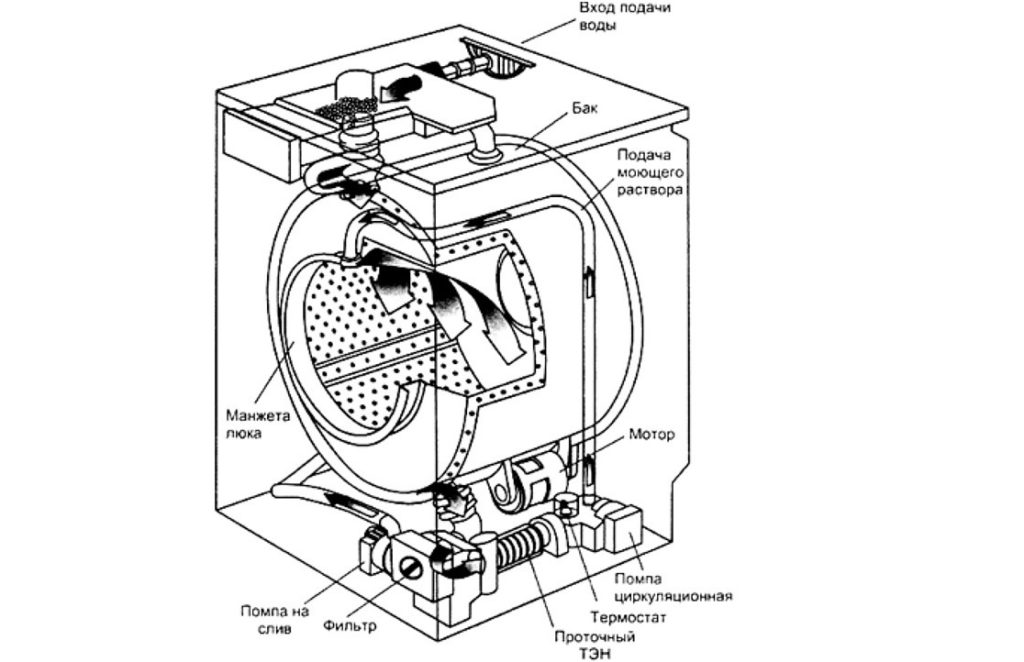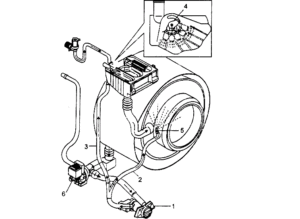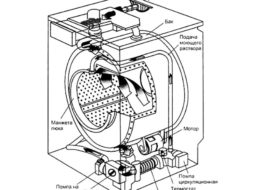Operating principle of the Kandy washing machine
 Modern household appliances make life much easier for people. Thanks to “smart” devices, a lot of time is freed up for really interesting and important things, proper rest, communication with loved ones, walks with children. However, few people think about what processes occur inside complex mechanisms. Let's look at how the Candy washing machine works and what parts help it with this.
Modern household appliances make life much easier for people. Thanks to “smart” devices, a lot of time is freed up for really interesting and important things, proper rest, communication with loved ones, walks with children. However, few people think about what processes occur inside complex mechanisms. Let's look at how the Candy washing machine works and what parts help it with this.
What's going on inside the machine?
The user is accustomed to seeing the front part of the device, turning the programmer, pressing buttons, locking the device from children, loading dirty laundry into the drum and watching how it “dangles” in the water. How exactly the main washing cycle, rinsing and spinning occurs is known to few people. It's actually very exciting.
Kandy, like all washing machines, has a drum covered with a door. Dirty clothes are placed in it, where they are cleaned of dirt, rinsed from detergents and get rid of excess water. All this happens due to the rotation of the drum. In order for it to rotate, a motor with a complex drive mechanism is needed. Candy is equipped with a belt drive, operation is ensured as follows:
- the electric motor rotates at a given speed;
- a special belt is attached to the motor, transmitting speed to the drum pulley;
- the pulley is attached to the cross holding the drum;
- the part rotates thanks to bearings.

The drum itself is located in a plastic tank, the main task of which is to retain water. In this case, the walls of both elements never touch, so the drum does not jam.The outlet valve helps draw clean tap water into the machine. When enough liquid has been collected, it closes.
If the water is used, it is drained using a pump. It starts working after washing, rinsing and during spinning. The washing machine must “know” how much liquid is left inside. For this purpose, the device is equipped with a water level sensor (pressostat). There is also a temperature sensor that determines the temperature of the water heated by the heating element.
All processes are regulated by the control module. It stores the parameters specified by the user in its memory and ensures unquestioned execution of commands. The control module starts the heating element, “observes” the data of the pressure switch and thermostat, determines the operation of the engine, and participates in the operation of each mechanism.
Important! Equipment with inverter motors works differently.
Features of the program implementation
Candy is an automatic machine that, without outside intervention, is capable of completing all stages of washing clothes. Sometimes technology fails. Some of them can be dealt with on your own, while others are a reason to call a professional technician.
 Let's look at the general operating principle of all Kandy washing machines. Before starting the washing program, place the soiled laundry in the drum. All pockets must be empty; clothing cannot have removable decorative elements (pins, stickers, brooches) that are easily detached. Then detergent is poured or poured into a special compartment. The chemical composition will be washed out of the tray while the machine is operating; when switching to the rinsing mode, the powder will be completely used up.The user plugs the device into the outlet, opens the water tap (if it was closed) and starts the selected washing mode.
Let's look at the general operating principle of all Kandy washing machines. Before starting the washing program, place the soiled laundry in the drum. All pockets must be empty; clothing cannot have removable decorative elements (pins, stickers, brooches) that are easily detached. Then detergent is poured or poured into a special compartment. The chemical composition will be washed out of the tray while the machine is operating; when switching to the rinsing mode, the powder will be completely used up.The user plugs the device into the outlet, opens the water tap (if it was closed) and starts the selected washing mode.
The equipment independently draws water, washes, rinses and spins washed clothes. Each mode assumes a specific algorithm for the device’s actions, programmed by the manufacturer. The heating element heats the water to the set temperature, and the main wash begins. The drum rotates, so the laundry is constantly rinsed in a solution of powder and water, cleansing it of dirt.
When the main wash is finished, a special valve opens and the pump drains the liquid. If there is no moisture left in the tank, clean water is supplied through the outlet valve. The pressure switch monitors the water level, and when a certain volume is reached, rinsing starts. This stage is repeated several times. Then the spin is turned on, the drum begins to spin intensively. Excess water first enters the tank and is then removed by the drain pump.
Interesting:
Reader comments
- Share your opinion - leave a comment





















Add a comment